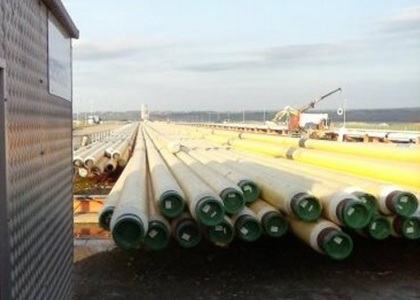Mineral oil is a mixture of substances consisting mainly of hydrocarbons, that during transformation processes develops into organic matter. Embedded in the earth’s crust, as a raw material the mineral oil obtained by means of extraction and not yet, or only primarily treated, is also known as crude oil.
The Schiehallion oil field, approx. 100 miles to the west of the Shetland Islands in Block 204 of the UK Continental Shelf, a region of the coastal waters of Great Britain divided into areas, is regarded as one of the largest and deepest areas of oil deposits ever discovered in the North Sea. Since 1998 almost 400 million barrels of oil have already been extracted there from a depth of 350 to 450 meters by the operator BP.
Miles and miles of an underwater network consisting of extraction equipment, distribution stations and rigid connecting pipes convey the extracted oil through a variety of flexible riser pipes to an FPSO (Floating Production Storage and Offloading Unit). FPSO´s are floating installations for the production and processing of hydrocarbons as well as the storage of crude oil. The regular offloading of the crude oil produced thereby takes place either by means of shipment on regularly commuting tankers or in rare cases by pumping off and further transport in pipelines.
After years of material-stressing production under the extreme environmental conditions in the rough North Atlantic and to secure the production of a further suspected 450 to 600 million barrels of oil, in 2011 with the Quad 204 Project BP and its partners decided to carry out a comprehensive renewal and expansion of the existing underwater infrastructure including the replacement of the FPSO in stages by 2017.
Due to the high water pressure and low temperatures, particular demands are placed on the integrity of the underwater infrastructure for the extraction of crude oil.
Because of this the inner surface of certain pipe sections were scrutinized visually for deposits and any kind of contamination by INSPECTOR SYSTEMS before they were laid on the sea bed. This involved a selection of 13 pipelines, each with a length of 1 km, so-called "stalks". These however consist of 12m pipe sections with a diameter of 8 inches that are welded together. For the increased stressing of the surface, in addition the inner wall is provided with a 3 mm thick CRA-coating as wear protection. At the BP "Spool Base" in Evanton/UK the inspection from both ends of the pipe was performed with a type 3000 remote-controlled and cable-bound Video-Laser inspection robot in combination with a 500 meter long supply cable.
The inspection head itself sits on a 360° rotating unit and contains a high-resolution color camera with 10x optical zoom and automatic focus as well as an LED lighting ring for the optimal illumination of the inspection area. Due to the tilt function of the camera in combination with the rotating unit, every part of the surface could be inspected in detail. In addition to this, through the integrated laser it was possible to measure and classify imperfections with a propagation > 2 mm to an accuracy of 0.1 mm.
In view of the inclement weather in the North Atlantic renewal work there is only possible during the summer months. For this reason the inspection had to be completed within a tight time frame. Because at the end, when being constructed to form a continuous pipeline, the `stalks´ would be wound up onto a spool. A ship then brought the pipeline to its new destination - in the North Sea.



